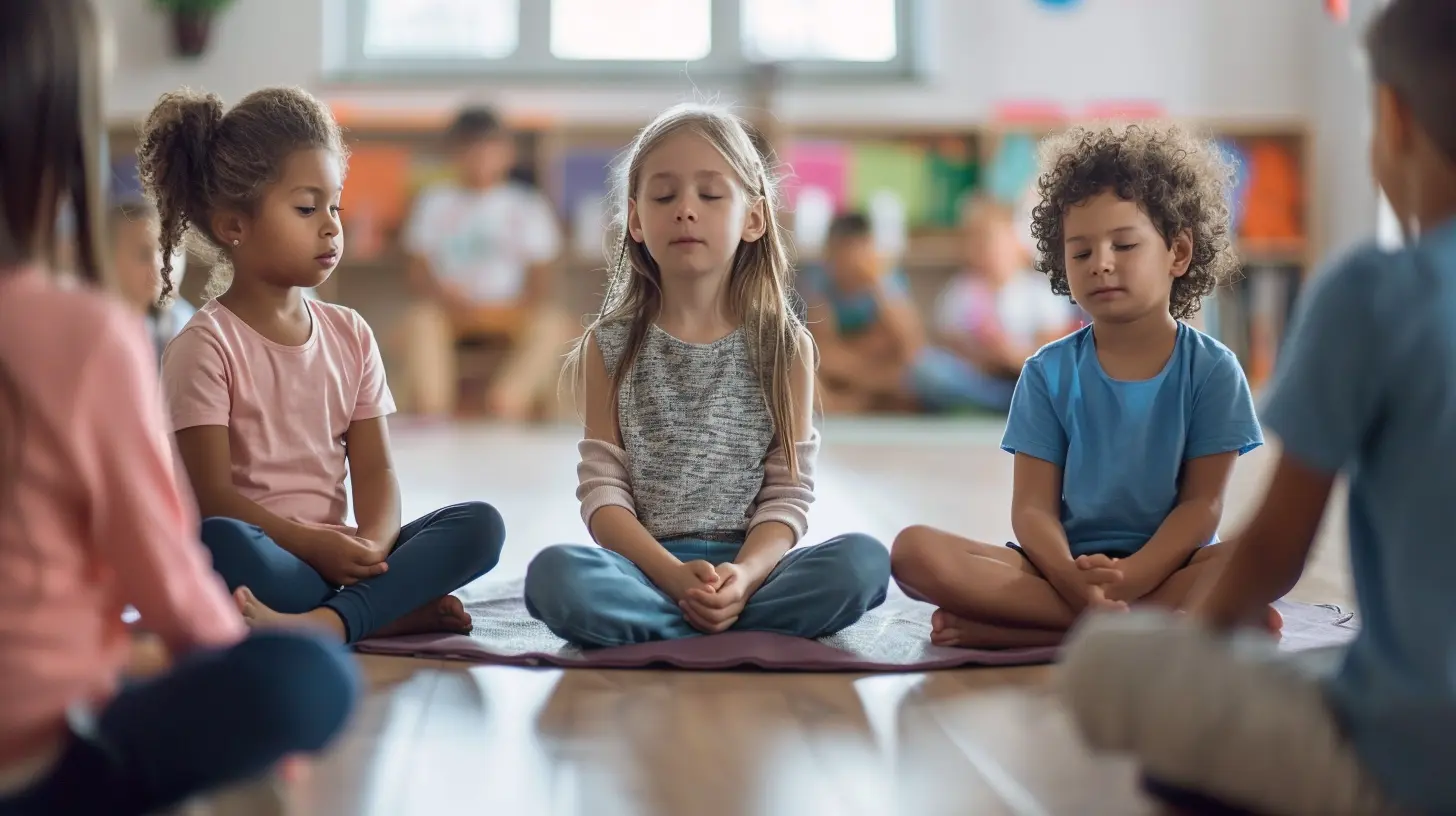Mindfulness for kids can help them manage stress, improve focus, and build emotional resilience. In this article, you’ll find a variety of simple and engaging mindfulness activities designed for children. These practices can be easily integrated into daily routines to support their emotional and mental well-being.
Key Takeaways
- Mindfulness practices can significantly help children manage stress, enhance focus, and foster empathy, providing them with invaluable coping strategies for emotional regulation.
- Simple mindfulness activities like deep breathing, mindful coloring, and sensory exploration can be easily integrated into a child’s daily routine, making mindfulness both fun and accessible.
- Group mindfulness activities and tailored mindfulness techniques for different age groups can cultivate a supportive community and promote lifelong emotional well-being and self-awareness.
Introduction
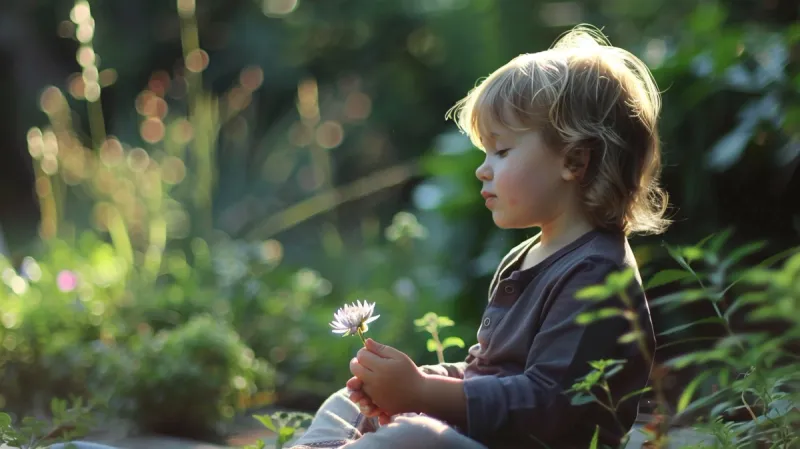
In an era brimming with digital distractions and societal pressures, mindfulness emerges as a beacon of calm, steering children towards a life of conscious awareness and emotional balance. Mindfulness is not just a fleeting trend; it is a purposeful practice of anchoring oneself in the here and now, fully engaging in the present moment. The art of mindfulness can provide significant relief and invaluable coping strategies, especially for children grappling with anxiety or impulsiveness.
Mindfulness serves as a gentle guide through the tumult of emotions and behaviors that accompany the growth of our young ones, from the restless to the reflective. It equips them with the ability to observe their thoughts and feelings without getting swept away, allowing them to choose their responses rather than being at the mercy of immediate reactions. In the context of education, mindfulness is not only about paying attention; it’s about cultivating a nurturing space for children to thrive emotionally and academically.
The Benefits of Mindfulness for Kids
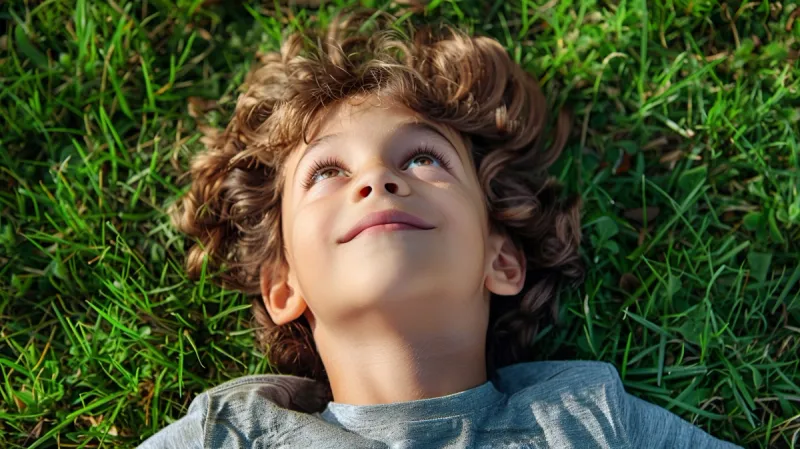
Each facet of mindfulness gleams with a unique benefit for our children, much like a multifaceted gem. Delving into mindfulness practices, from mindful breathing to mindfulness meditation, children learn to:
- Manage stress with grace
- Direct their focus with intention
- Make mindful decisions
- Foster empathy for others
It is a skill that, once harnessed, can transform their approach to life’s challenges and enable them to develop emotional learning and resilience.
The beauty of mindfulness is its universal applicability; it doesn’t discriminate, offering solace and support for children across the spectrum, from those with ADHD to those facing stress and depression. By integrating mindfulness into their lives, we not only teach kids a vital life skill but also teach mindfulness, empowering them to navigate their journey with a clear mind and a steady heart.
The practice of mindfulness is not about emptying the mind, but about embracing the full experience of living, moment by moment, by practicing mindfulness.
Simple Mindfulness Activities for Kids

Peeling back the layers of mindfulness reveals a treasure trove of simple yet powerful activities tailored for our children. Engaging in mindfulness practice can be a fun way for children to explore their inner and outer worlds. From the calming rhythm of deep breathing to the vibrant swirls of mindful coloring, these activities offer a playful path to self-discovery and peace.
Whether it’s through sensory exploration or the gentle embrace of other exercises, these practices are designed to spark curiosity and foster a love for the stillness found within the present moment.
Deep Breathing Exercises
Offering a tangible way for children to connect with the ebb and flow of their breath, deep breathing exercises are the cornerstone of teaching mindfulness. Picture a classroom where young minds begin their day with a series of deep breaths, visualizing their bellies as balloons inflating and deflating with each cycle of air. This simple act of intentional breathing encourages deep breathing and can set the tone for calmness and focus, grounding them for the learning ahead. Techniques like the 4-7-8 breathing method or the playful Pinwheel Breathing are not only easy to practice but also promote emotional regulation, helping children navigate their emotions with ease.
Square Breathing is another technique that can be introduced in a fun way, guiding children to breathe in a pattern that resembles the shape of a square. For those moments when the classroom energy needs to be reined in, Back-to-Back Breathing can foster a sense of empathy among students as they feel the rise and fall of their partner’s breath. These breathing exercises are not just about inhaling and exhaling; they are about instilling a sense of mindfulness that can ripple through every aspect of a child’s day.
Mindful Coloring
Allowing children to immerse themselves in a world of color and creativity, mindful coloring is a kaleidoscope of tranquility. With every stroke of the crayon, kids are encouraged to pay attention to the sensations under their fingers, the hues that unfold before their eyes, and the gentle sound of coloring. It is a mindfulness practice that effortlessly captures children’s attention, drawing them into a state of flow where time and worries melt away. In the classroom, mindful coloring can be a gateway to teaching about patterns, shades, and artistic expression, all while nurturing a meditative mindset.
The act of coloring can be a sanctuary from the chaos of the playground or the intensity of academic pressures. It offers a pause, a moment to breathe and simply be. As children engage in this mindful activity, they learn the subtle art of paying attention, of being fully present in their task, and in turn, this practice can spill over into other areas of their life, fostering a habit of mindfulness that will support them in times of stress and strain.
Sensory Exploration
Children are invited to awaken their senses and anchor themselves in the world around them through sensory exploration. The Five Senses Exercise is a journey through:
- Sight
- Sound
- Smell
- Taste
- Touch
This exercise brings children into a state of heightened awareness, helping them to focus on their present experiences. Engaging with different textures or tuning into the rich tapestry of sounds that surround them, children can explore mindfulness in a way that is tangible and immediate.
Whether it’s through the Sense Countdown activity or mindful listening, sensory exploration is a doorway to discovery and presence. For younger children, the Spidey Senses game can make mindfulness an adventure, igniting their imagination as they pretend to have superhuman senses. This playful approach to mindfulness not only makes the practice accessible but also embeds it into their daily routine in a way that feels natural and enjoyable.
By fostering this curiosity and attentiveness, sensory exploration lays the groundwork for a lifelong practice of mindfulness that will serve them well as they navigate the complexities of growing up.
Group Mindfulness Activities for Classrooms
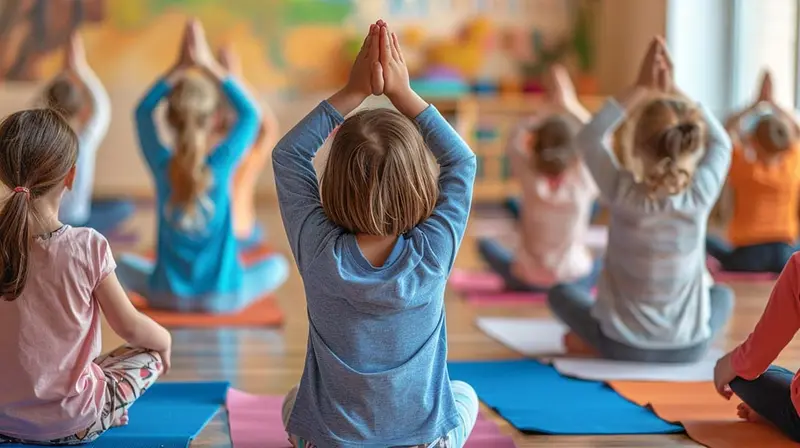
Group activities in the classroom, transitioning from solo adventures in mindfulness to collaborative experiences, provide a shared space for mindfulness to flourish. These activities are not just about individual growth; they are about fostering a community of mindful learners who support and learn from each other.
From the collective calm of a mindful eating exercise to the shared silence of a nature observation, group mindfulness practices can transform the dynamic of a classroom, creating a culture of focus, empathy, and connectedness.
Mindful Walks
Students are invited to step outside the confines of the classroom and immerse themselves in the natural tapestry that surrounds them through mindful walks. These walks are not about reaching a destination; they are about the journey of observation and presence. Listening walks sharpen the senses, prompting children to tune into the symphony of sounds that often go unnoticed. Rainbow Walks add a splash of color to the practice, encouraging kids to seek out the full spectrum of hues in their environment, from the red of a rose to the violet of a distant mountain.
As children wander and wonder, their descriptions of what they see and hear can serve as a form of visualization meditation, deepening their mindfulness experience. Mindful walks are an opportunity for students to:
- Connect not only with their inner selves but also with the world around them
- Cultivate a sense of wonder and appreciation
- Carry this experience back into the classroom and beyond
Yoga for Kids
Weaving the threads of mindfulness through each stretch and pose, yoga for kids is a dance of movement and stillness. In the playful shapes of animal stretches, children find a blend of fun and focus, connecting with their bodies in a way that is both engaging and educational. Apps like Cosmic Kids Yoga bring these practices to life with themed videos that capture young imaginations, making mindfulness an adventure rather than a chore.
Incorporating yoga into the classroom offers a reprieve from the rigors of academic pursuits, allowing children to explore the space between effort and ease. As they move through the postures, they learn not just about balance and flexibility, but also about the power of a mindful breath and the peace that comes from a quiet mind. Yoga becomes a tool for self-regulation, a sanctuary of calm in the midst of a busy school day.
Mindfulness Games
Making the concepts of mindfulness tangible and exciting for children, mindfulness games inject a dose of joy into the practice of presence. Some examples of mindfulness games include:
- Reimagining classic games like ‘Red Light, Green Light’ to emphasize observation, turning a moment of play into a lesson in mindfulness.
- Mindfulness Bingo, where children complete tasks that encourage them to engage with their surroundings and their inner worlds.
- Scavenger Hunts, which create a space for exploration and self-reflection.
These kids mindfulness games help children develop their mindfulness skills while having fun.
The playful ring of a chime or bell can signal a moment to pause and reset, bringing a classroom of bustling energy back to a state of collected focus. These games are not just about winning or losing; they are about experiencing the fullness of the present, about learning to navigate the ebb and flow of emotions with grace and awareness. They are about teaching children that mindfulness is not separate from life; it is a vibrant part of it.
Incorporating Mindfulness into Daily Routines

Mindfulness is not confined to the classroom or the meditation mat; it can be woven seamlessly into the fabric of our daily lives. Creating a calm-down corner, maintaining a mindfulness journal, and setting positive intentions are ways to infuse mindfulness into the routines of children, providing them with touchpoints of tranquility throughout their day.
These practices are not just activities; they are rituals that cultivate a mindset of practiced mindfulness, transforming ordinary moments into opportunities for growth and reflection through mindfulness training.
Morning Mindfulness
A day lived with intention and awareness is set by morning mindfulness. Integrating a brief family meditation or a moment of gratitude at the breakfast table can sow the seeds of positivity and purpose, providing a foundation for a day filled with mindful choices. It is a practice that can be as simple as setting a gentle intention for the day, a beacon to guide children through the ebb and flow of their activities and interactions.
This practice of cultivating presence from the first rays of dawn empowers children to approach their day with clarity and focus. It is a quiet revolution, a subtle shift that can ripple outward, influencing not just the child but the entire family dynamic. Morning mindfulness is a gift we give our children, a tool that equips them to meet the world with a steady gaze and a grounded heart.
Mindful Transitions
Moments that can be infused with presence and calm, mindful transitions act as the bridges between activities. Incorporating mindful breathing exercises or calming music during these transitions can create a smooth passage from one part of the day to another, helping children stay present and focused. It is an opportunity to teach children that mindfulness can be a constant companion, a resource to draw upon in times of change and uncertainty.
Muscle relaxation activities allow children to tune into their bodies, becoming aware of tension and release. These practices not only aid in easing transitions but also foster self-awareness and self-regulation, skills that are invaluable as children navigate the complexities of growing up. By embedding mindfulness into the rhythm of their day, we offer children a pathway to inner peace that can steady them amidst life’s fluctuations.
Bedtime Mindfulness
A time to unwind and prepare for rest, bedtime mindfulness serves as the gentle closing of the day. Guided relaxation or a simple body scan can create an oasis of calm, guiding children towards peaceful slumber. These bedtime routines are not just about falling asleep; they are about nurturing a sense of serenity that can envelop the night and carry into the dreams of our little ones.
The Moshi Kids app is a treasure trove of bedtime mindfulness, with activities and stories designed to ease the transition from day to night. As families come together in the quiet of the evening, sharing a moment of mindfulness can become a cherished ritual, one that strengthens bonds and fosters a shared practice of presence.
Bedtime mindfulness is a lullaby for the soul, a way to tenderly tuck in not just our bodies but also our spirits.
Guided Meditation for Kids

A practice that can lead children through the valleys and peaks of their inner world with a calming voice and a nurturing narrative, guided meditation is a gentle sojourn into the landscape of the mind. From the focused attention of a body scan to the playful curiosity of a ‘mindful feet’ exploration, guided meditation offers a spectrum of experiences that can engage children of all ages.
It is a practice that acknowledges the normalcy of worries, providing coping methods that can help children with anxiety find solace and strength.
Body Scan Meditation
Children are invited to embark on an inward journey, exploring the sensations within their own bodies through Body Scan Meditation. As they mentally traverse from head to toe, they become attuned to areas of tension and relaxation, cultivating an acute awareness of their physical selves. For younger children, the practice can be made playful and brief, while for older students, it can be a more extended and introspective experience, adaptable to suit their developmental stage.
The beauty of a Body Scan Meditation lies in its simplicity and the ease with which it can be integrated into a child’s daily routine, perhaps as a calming bedtime activity. By regularly engaging in this practice, children can learn to identify and respond to their body’s signals, enhancing their mindfulness skills and contributing to their overall well-being. It’s a practice that helps them ground themselves in the present, providing a respite from the distractions of the outside world.
Visualization Exercises
Allowing children to replace the cacophony of daily life with calming imagery and peaceful scenarios, visualization exercises serve as a serene escape for the mind. Elementary students, in particular, can benefit from pairing mindful breathing with visualizations of serene landscapes or affirming phrases, enhancing the calming effects of the practice. These exercises can be guided by a teacher or parent using soothing scripts and soft music, creating a tranquil environment conducive to relaxation and focus.
Some examples of visualization exercises for children include:
- Imagining floating on a cloud and feeling weightless
- Visualizing a peaceful beach with gentle waves and warm sand
- Picture yourself in a beautiful meadow surrounded by flowers and butterflies
- Imagine being in a cozy cabin in the woods, listening to the sounds of nature
These exercises can help elementary school students relax, reduce stress, and improve focus and concentration.
Through visualization, children learn to:
- Redirect their thoughts from anxiety-inducing stimuli to images that evoke serenity and comfort
- Strengthen their capacity to regulate their emotional responses and maintain composure in the face of stress
- Craft their own inner sanctuary of peace
Visualization is not just an escape; it’s a tool for empowerment.
Breathing Buddies
As younger students delve into the practice of mindful breathing, Breathing Buddies offer a tangible companion. By placing a stuffed animal on their chests, children can observe the rise and fall of their breath, making the intangible process of breathing visible and relatable. This exercise not only teaches the fundamental principles of deep breathing but also adds an element of comfort and playfulness to the practice.
The Breathing Buddies activity is a gentle introduction to meditation, providing children with a friendly focus point for their breathwork. As they watch their stuffed animal move with each inhale and exhale, they learn the rhythm of intentional breathing, laying the foundation for more advanced mindfulness practices as they grow. It’s an endearing way to impart the importance of breath in managing emotions and fostering calmness.
Mindfulness Tools and Resources
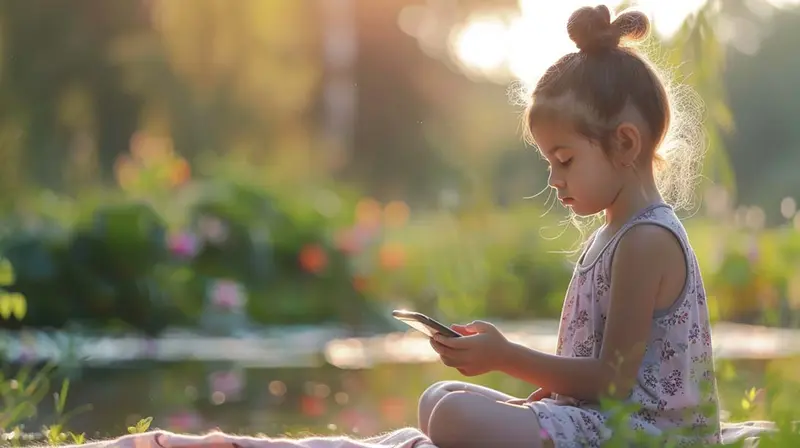
In our digital age, technology offers a plethora of tools and resources to support and enhance the practice of mindfulness for children. From apps that guide meditation sessions to books that introduce mindfulness concepts, these resources are invaluable for parents and educators seeking to incorporate mindfulness into the lives of children.
With options ranging from guided meditation tracks on Headspace to interactive activities on GoNoodle, these tools can help children practice mindfulness in an accessible and engaging manner.
Mindfulness Apps
Where children can explore the realms of relaxation and awareness at their own pace, mindfulness apps serve as digital havens. Stop, Breathe & Think Kids simplifies mindfulness into short, engaging exercises, while Calm Kids offers programs featuring beloved characters to draw in the younger audience. These apps provide a diverse range of content, from bedtime stories to deep-breathing exercises, making mindfulness an accessible and enjoyable part of daily life for children.
For those seeking a more structured approach, apps like Ninja Focus and Piku categorize their content to address specific needs, from managing emotions to embarking on a ‘Magic Journey’. Moreover, Cosmic Kids Zen Dens deliver mindfulness through captivating storytelling and animations, ensuring that children remain engaged and entertained as they learn to navigate their inner landscapes.
Books on Mindfulness
Providing a tactile and imaginative avenue for children to learn about and practice mindfulness, books on mindfulness are invaluable. ‘Breathe Like a Bear’ by Kira Willey offers a collection of mindfulness exercises suited for young children, making the practice accessible and fun. These books are more than just stories; they are guides that help children and adults alike delve deeper into the practice of mindfulness, offering strategies and exercises that can be incorporated into everyday life.
A curated selection of mindfulness books can be an invaluable resource for families and educators eager to teach this practice. They serve as both educational tools and sources of inspiration, sparking conversations about emotions, thoughts, and the importance of being present. By integrating these books into the learning environment, we can create a culture of mindfulness that supports the mental and emotional development of children.
Teaching Mindfulness to Different Age Groups
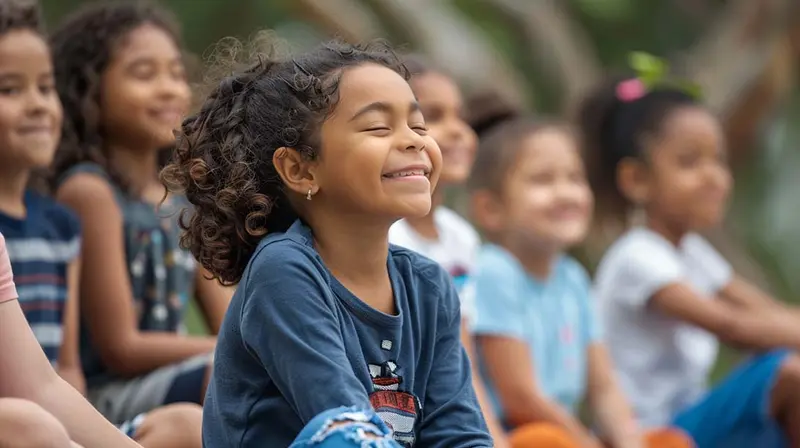
Adapting mindfulness practices to suit the developmental stages of children is crucial for fostering a meaningful and lasting practice. Whether it’s introducing toddlers to the basics of breath and body awareness or guiding teenagers through more complex meditations, tailoring the approach to each age group ensures that the practice is both age-appropriate and engaging.
By considering the unique needs and capacities of different age groups, we can ensure that mindfulness becomes a valuable tool in their personal toolkit, supporting their growth and development.
Toddlers and Preschoolers
Through playful activities that resonate with their level of understanding and curiosity, mindfulness can be introduced to toddlers and preschoolers. Using simple tools like pictures and objects, or engaging in sensory activities with food and music, we can teach young children how to focus their attention and become more present. Activities such as yoga and music time offer meditative benefits in a form that is both enjoyable and developmentally suitable for this age group.
Drawing on elements of nature or conducting a ‘feelings circle’ can help preschoolers articulate their emotions, fostering empathy and a deeper connection to their experiences. Some activities that can be used to promote mindfulness and emotional well-being in preschoolers include:
- Nature sounds game: encourages them to pay attention to their environment, promoting sensory awareness and presence in a fun and interactive way
- Mindful breathing exercises: teaches them to focus on their breath and be present in the moment
- Guided visualization: helps them imagine calming and peaceful scenes
- Mindful movement activities: such as yoga or stretching, to help them connect their mind and body
By introducing mindfulness at this early stage, we lay the foundation for a lifetime of emotional well-being and self-awareness.
Elementary-Aged Children
At a stage where they can begin to grasp more structured mindfulness practices, including stress management strategies and specific breathing techniques, elementary-aged children are prime candidates for mindfulness learning. Some mindfulness practices that can be introduced to children include:
- Belly breathing: a simple yet effective way to introduce the concept of mindful breathing, helping children to calm their minds and center their attention.
- Mindful walking: encouraging children to pay attention to their steps, the sensation of their feet touching the ground, and the sounds around them.
- Body scan: guiding children to focus their attention on different parts of their body, noticing any sensations or tension.
- Mindful eating: encouraging children to eat slowly and pay attention to the taste, texture, and smell of their food.
These practices can be seamlessly integrated into the children’s daily routines, providing them with tools to manage stress and enhance focus.
As children progress through elementary school, mindfulness can be woven into their educational experiences. By teaching these skills within the context of their learning environment, we not only support their academic growth but also their personal development. Mindfulness practices can help children cultivate patience, empathy, and resilience, equipping them to face the challenges of growing up with confidence and composure.
Teenagers
Able to engage in more advanced mindfulness practices such as guided meditation and reflective journaling, teenagers benefit from their developing cognitive abilities and heightened self-awareness. These techniques offer teenagers tools to manage the complex emotional landscape of adolescence, from the pressures of social dynamics to the challenges of academic expectations. By encouraging teens to practice mindfulness, we empower them to take ownership of their emotions and cultivate a sense of inner peace.
The language and activities used in mindfulness practices for teenagers need to resonate with their interests and life experiences. Counting breaths, for example, can be an effective way to introduce the concept of awareness, while yoga and other mindful movement practices can appeal to their need for physical expression. By making mindfulness relevant and engaging for teenagers, we open the door for them to explore their inner world and develop skills that will support their well-being throughout their lives.
Summary
In this journey through the world of mindfulness for children, we’ve explored an array of practices, from the grounding effects of deep breathing to the creative calm of mindful coloring. We’ve seen how mindfulness can be seamlessly woven into daily routines, providing a steady pulse of tranquility in the lives of children. By tailoring mindfulness activities to different age groups, we ensure that every child can access the benefits of this practice, no matter their stage of development.
As we conclude, let us remember that the essence of mindfulness is not found in any single activity but in the quality of attention we bring to each moment. It is our hope that the practices shared here will inspire you to cultivate a mindful environment for the children in your life, one that nurtures their growth, supports their well-being, and empowers them to navigate the world with a centered and peaceful heart.
Frequently Asked Questions
How can I introduce mindfulness to very young children who have short attention spans?
You can introduce mindfulness to very young children with short attention spans by engaging them in activities using sensory toys, nature sounds, or practicing belly breathing with a stuffed animal as a "breathing buddy." This can capture their attention and make the practice enjoyable for them.
Are there specific mindfulness exercises that can help children with anxiety?
Yes, mindfulness exercises such as deep breathing, body scan meditations, and guided imagery can be beneficial for children with anxiety by helping them stay present and manage their emotions.
Can mindfulness be taught in a group setting, such as a classroom?
Yes, mindfulness can definitely be taught in a group setting like a classroom. Activities such as mindful walks, yoga, and mindfulness games can create a sense of community and shared practice among students. So, it's a great idea to implement mindfulness in the classroom.
Are there digital tools available to help teach mindfulness to children?
Yes, there are many digital tools such as 'Stop, Breathe & Think Kids', 'Calm Kids', and 'Cosmic Kids Zen Dens' that offer mindfulness exercises and activities designed specifically for children, making it easier for them to learn mindfulness.
Can mindfulness help improve focus and academic performance in children?
Yes, mindfulness can help improve focus and academic performance in children by teaching them to be present and engaged, which enhances their ability to learn and retain information. Give it a try and see the positive impact on your child's academic journey!
References and Further Reading
- 10 Mindfulness Activities for Kids - A list of simple and engaging mindfulness activities designed for children.
- Mindful Schools: Programs and Resources - Information on programs and resources for teaching mindfulness in schools.
- Mindfulness for Children: Meditations for Kids - Guided meditations and mindfulness exercises specifically designed for children.
- Mindfulness in Schools Project - A project aimed at integrating mindfulness into the education system.
- Mindfulness Activities for Kids: 30 Fun Exercises - A comprehensive list of fun mindfulness exercises for children.
- Mindfulness and Meditation Apps for Kids - Reviews of the best mindfulness and meditation apps for children.
- Teaching Mindfulness to Children and Teens - Strategies for teaching mindfulness to different age groups.
These links provide a wealth of information and resources to help you integrate mindfulness practices into the lives of children, enhancing their emotional and mental well-being.
